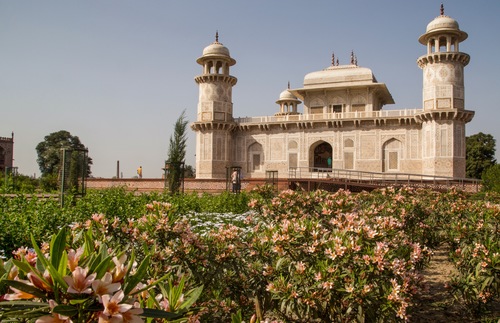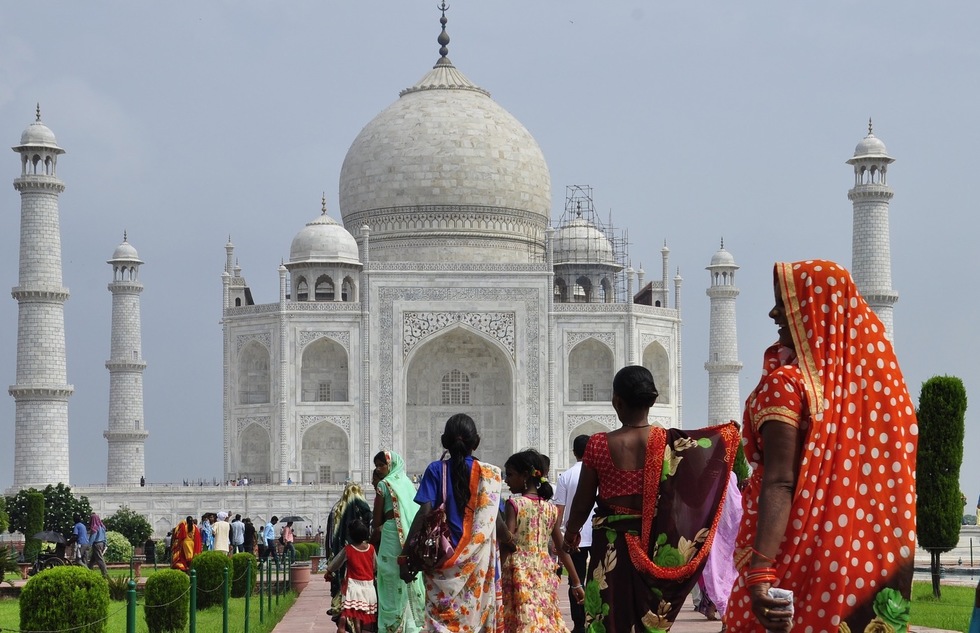Gazing at Shah Jahan's show-stopping tribute to his deceased wife, you can believe—even amid the hordes of tourists—that Agra was renowned for its elegance and beauty during the city's Mughal Empire heyday, when longboats floated down the Yamuna River between quadrilateral gardens fragrant with jasmine and oleander.
The Mughals moved to Delhi in 1648, though, and, in the intervening centuries, Agra got industrialized, crowded, and polluted.
Paradise lost?
Not entirely. Recent efforts have been undertaken to preserve the city's marquee wonder and restore other sites that have been damaged or neglected.
Saving the Taj
Last summer, India's Supreme Court ordered the government to do more to protect the Taj Mahal's surface from bug poo, industrial pollution, and other factors causing the marble to turn from ivory to yellow.As Smithsonian magazine points out, the plan to scrub away the grime on the monument also calls for measures to clean up the river.
Preservationists, meanwhile, have been worried about the impact that up to 70,000 visitors a day could be having on floors and foundations.
To address those concerns, the number of tourists allowed in each day is now capped at 40,000, and, more controversially, the price of admission for Indian citizens, who make up the majority of visitors, was hiked up in December by a whopping 400%, from 50 rupees to 250 rupees.
Though the new price is equivalent to only about US$3.50, that's an exorbitant sum for many Indians—and apparently that's the point.
"We want people to pay more to limit the footfall,” a government spokesperson told Agence France-Presse. “This will cut down the number of visitors to the mausoleum by at least 15-20% and generate revenue for its conservation."
So the plan is to save this Indian icon by keeping Indians out. Wouldn't it be fairer to further lower the admission cap for all guests—Indian and not—to at least spread the disappointment around a little?
Taj Mahal admission for foreigners, by the way, is 1,300 rupees (US$19).
In Bloom Again
On the other side of the Yamuna, a just-completed four-year project led by the World Monuments Fund and the Archaeological Survey of India has restored two of those previously mentioned riverfront gardens—Mehtab Bagh and the Garden of the Tomb of I’timad-ud-Daulah.Their pavilions and walls have been spruced up, and hibiscus, jasmine, and other green things have been replanted in the same four-square Char Bagh layout favored by 16th- and 17th-century nobles.
A clean, eco-friendly irrigation system was devised, and a new visitor center with interactive multimedia exhibits was installed at I'timad-ud-Daulah.

(I'timad-ud-Daulah; image by WMF)
Trees and shrubs on the grounds still have some growing to do, but visitors can now get a feel for gracious Mughal living, circa 1600.
Admission at Mehtab Bagh is 25 rupees for Indian citizens, 300 rupees (US$4.23) for foreigners. I'timad-ud-Daulah is 30 rupees for Indian citizens, 310 rupees (US$4.37) for foreigners.
Both gardens as well as the Taj Mahal are free for all children 15 years old and younger.






